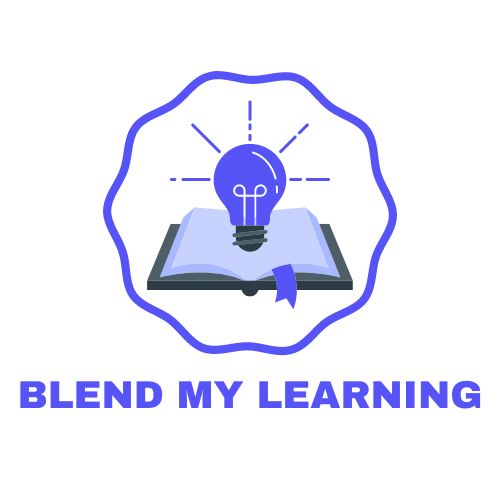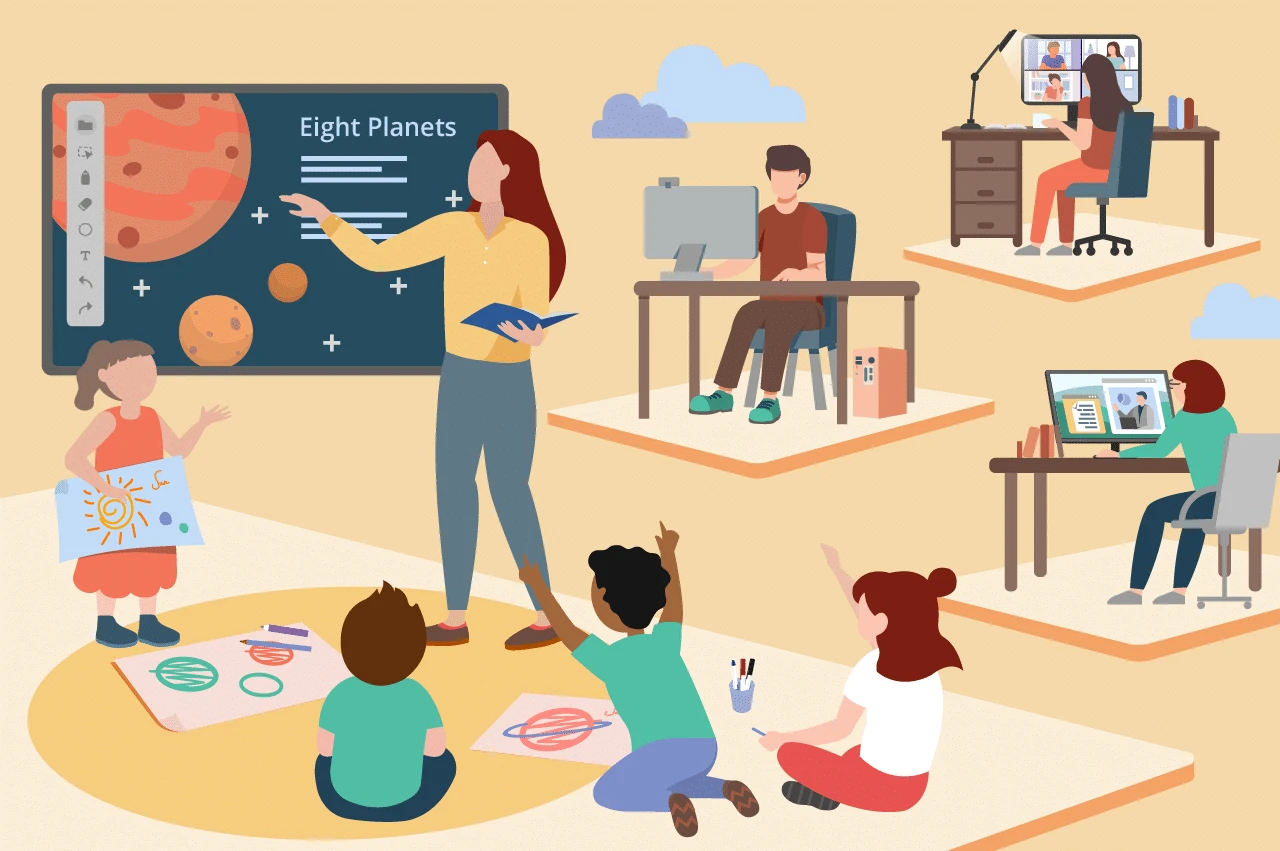Blended learning combines online and in-person instruction. This offers students more flexibility in when and where they learn. It also improves accessibility. At the same time, collaborative learning is effective for keeping students engaged with each other and enhancing the learning process overall.
Incorporating collaboration into a blended model requires proper planning and execution. The following steps outline how to achieve this successfully.
Focus on the Finish Line

Whether collaboration happens online or in the classroom, students need a shared sense of purpose to stay motivated along the way. James, a dedicated social studies teacher, believes in setting jointly defined yet ambitious goals at the outset.
With his guidance, groups discuss desired outcomes and map backward to ensure tasks lead naturally there. This clarity of vision keeps teams coordinated as project milestones loom into view.
Rise to the Challenge Together
Digital tools expand possibilities for collaboration, but picking the right fit requires thoughtfulness. Ms. Williams consults product guides to compare features as students brainstorm course needs. Which platform best fosters exchange while catering to varied schedules and abilities?
Piloting options as a class builds buy-in. With partnership through trial and error, their tool becomes a trusted partner, not just another assignment.
Make Cooperation Count

Group work deserves our full attention to maximize results. Jeff solicits interests to craft cooperative problems reflective of real-world issues. Peer reviews then showcase diverse perspectives, strengthening end products.
Discussion forums flourish under his gentle reminders that many minds learning from each other will raise the bar for all. Together, they prove how teamwork strengthens skills as it lifts each unique voice.
Foster Teamwork

For collaborative projects to succeed, students need an environment where all viewpoints feel respected. Educators stress creating a safe space for open discussion of ideas. Shared objectives require listening to different perspectives.
Guidance helps peers learn to work cooperatively by addressing challenges together supportively. As comfort develops among group members, the necessary conditions form for solving problems through a joint effort.
Provide Structure and Support

Complex collaborative projects benefit from proper support structures. Rather than dictating roles alone, the guidance also involves facilitating democratic planning so duties feel self-assigned. Teams establish measurable benchmarks using outlined guidelines and rubrics.
Regular check-ins allow groups to request clarification as needed. Consistent yet adaptable monitoring helps ensure individual students can succeed through cooperative efforts.
Employ Flexible Exchange
Real-time synchronous activities like debates enable instant feedback, while asynchronous forums facilitate flexible contributions over time. Mixing online and in-person elements accommodates students’ diverse circumstances outside of class. The focus is on productive participation regardless of location or timing. This blended approach nurtures joint work across situations.
Leverage Peer Learning
Encourage learning from others. Students can gain understanding from each other’s varied experiences and viewpoints. Use peer reviews and joint projects to facilitate sharing perspectives. Learning from peers fosters deeper engagement with the course material.
Assess Collaborative Work
Evaluate collaborative activities. Use assessments to track progress and check final results. Provide feedback on the work process as well as the output. Ensure fair grading by considering individual roles alongside group outcomes. This methodology encourages group accountability.
Encourage Reflection
Promote reflection on collaborative work. Ask students to consider their contributions and team dynamics. Reflection helps identify strengths and areas for development. It also enhances students’ experience in working together effectively.
Learning techniques and digital resources. Ensure comfort in applying technology and facilitating productive group work. Skilled direction aids in fulfilling experiences.
Address Potential Hurdles
Foresee and resolve expected complications. Participation imbalance, communication issues, and technical difficulties commonly arise. Develop strategies like assigning roles and multiple contact options. Offer tech support to solve problems.
Connect Concepts to Life’s Complexity

By bringing diverse realities into collaborative work, concepts attain context. Students mirror situations they may encounter, deepening focus as case studies, simulations and tangible projects fuse academic discovery with personal growth.
Hands shape themselves to help through learning lived elsewhere, outside walls, where knowledge finds purpose. Each voice strengthens the whole as viewpoints interlink, and shared endeavor brings lessons to life’s diversity in meaningful ways.
Provide Resources
Supply means aiding collaborative work’s promise. Digital utilities, step-by-step guides, and self-paced guides realize potential. The community grows through open doors invitations, and wisdom shared face-to-face. Success blossoms with tools and the community’s gentle tutelage empowering each hand that reaches for another’s.
Use Technology Effectively
Digital gears, when well-crafted and navigated with care, complement what joins hearts for learning’s cause. Communication flows freer, teamwork tightens sure, by reliable utilities made friendly to each hand.
When challenges arise technology works to soothe, not sever threads – experience thus lifting higher still through adaptation deft. Wise oversight shapes how tools serve, enhancing the fellowship the mind and soul deserve.
Provide Clear Instructions
To fare well together down the learning road, travelers need a clear companion. Objectives, duties, and what’s asked unveiled – with a brevity that lends focus wide – let no one wander aimlessly as tasks divide. Direction lights the path for each foot’s prudent progression, and productivity is sure to attendant.
As understanding deepens under purpose’s beams, together heights are reached unknown to solitary dreams. Wisdom’s words show the way for fellowship to flower.
Last Words
Blended education provides flexibility and opportunities for diverse learning experiences. Collaborative learning is one approach that can greatly enhance what’s possible in a blended model. By incorporating teamwork, dialogue, and joint problem-solving, a collaborative approach fosters critical skills.
Following the guidance outlined here allows educators to successfully implement collaboration activities within their blended courses. When students work together, learning becomes deeper and more meaningful overall. These practical steps support effective collaboration that benefits all.
Related Posts:
- Top Blended Learning Models for Effective Education…
- Top 10 Online Learning Platforms for Blended Education
- Best Practices for Using Online Platforms in Blended…
- Blended Learning vs. E-Learning - What is a Better Option
- Step-by-Step Guide to Creating a Blended Learning Curriculum
- Essential Tools for Digital Literacy in a Blended…








